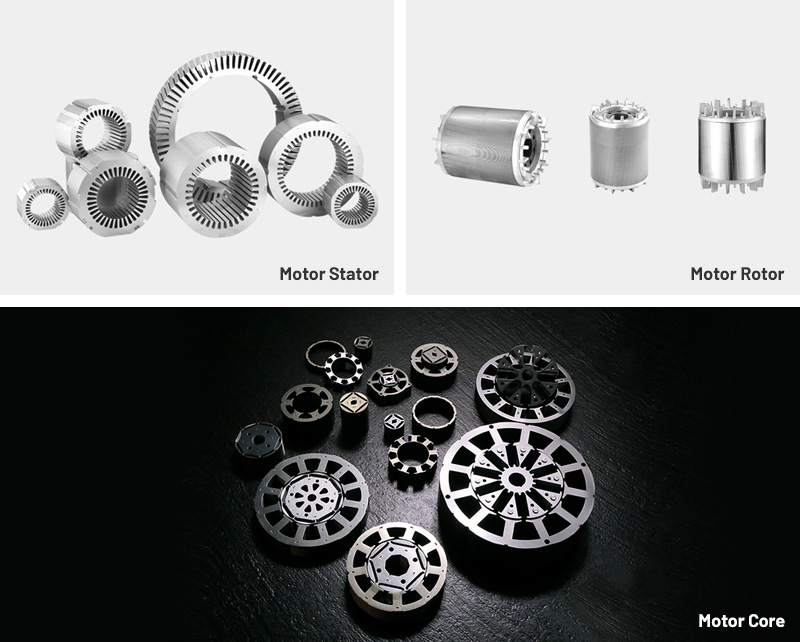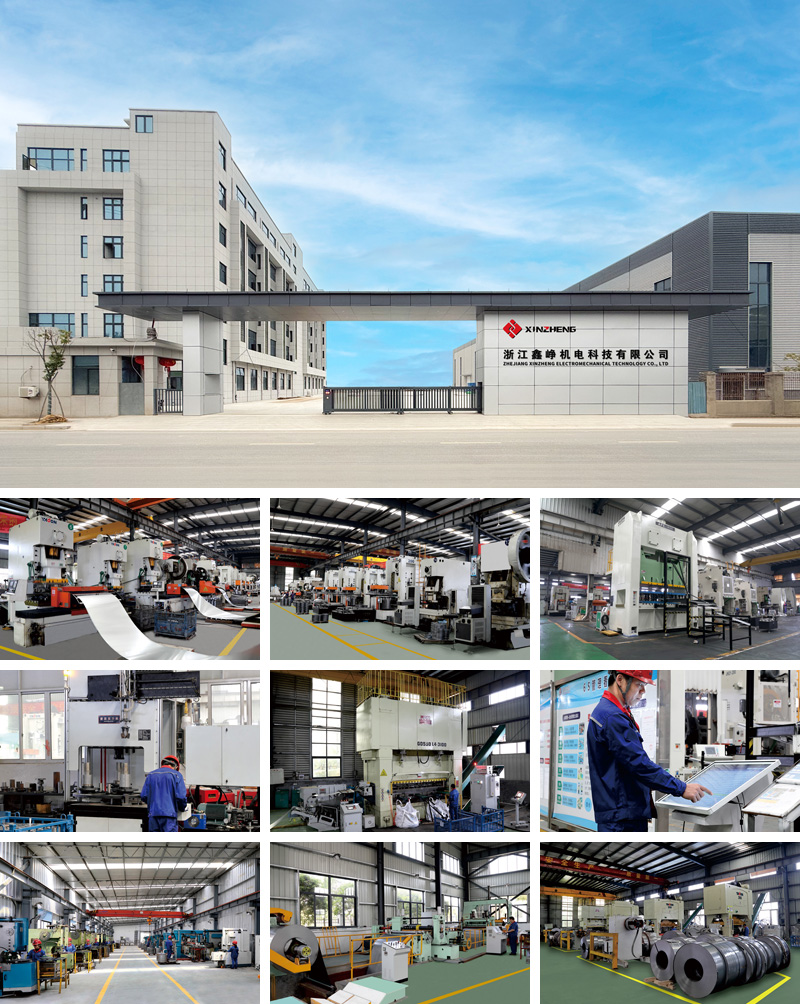Explosion-proof motors are essential for industries operating in hazardous environments, including oil and gas, chemical processing, mining, and grain handling. These motors must operate safely in areas with flammable gases, vapors, or combustible dust. The rotor, as a core moving component of the motor, is critical for efficiency, torque stability, and overall safety.
Explosion-proof motor rotor laminations are specially designed to optimize magnetic flux, reduce energy losses, and maintain mechanical stability under extreme operating conditions. Increasing regulatory requirements, such as ATEX and IECEx certifications, combined with the global trend toward industrial automation, have elevated the demand for high-performance, durable rotor laminations capable of supporting continuous duty in hazardous locations.
Rotor laminations guide magnetic flux within the motor, ensuring efficient torque generation. In explosion-proof designs, precision in lamination geometry is critical to avoid flux leakage, uneven torque, or hotspots, which could compromise both performance and safety.
High-quality laminations are manufactured from insulated electrical steel sheets. This design interrupts eddy currents and minimizes hysteresis losses, reducing heat generation and enhancing energy efficiency. Lower operating temperatures also help maintain compliance with explosion-proof safety standards, preventing ignition in flammable atmospheres.
Rotor laminations endure centrifugal forces, high-speed rotation, and thermal expansion. Maintaining dimensional and structural integrity ensures rotor-stator alignment, minimizes vibration, and reduces the risk of mechanical failure. Stability under thermal and mechanical stress is particularly crucial for continuous operation in harsh industrial environments.
Electrical steel is the preferred material for rotor laminations due to its high magnetic permeability, low core loss, thermal endurance, and mechanical strength. Laminations are typically 0.35–0.50 mm thick, balancing magnetic performance with mechanical stability. High-temperature insulation coatings prevent interlaminar short circuits and reduce eddy-current losses.
Advanced stamping or laser cutting produces laminations with exact dimensions and smooth edges. Accurate cutting prevents insulation damage and ensures consistent magnetic properties, which are critical for explosion-proof motors where performance and safety margins are tightly controlled.
Laminations are stacked using adhesive bonding, interlocking, or welding. Proper stacking minimizes vibration, maintains alignment, and ensures uniform mechanical and magnetic performance. Insulation coatings between laminations enhance thermal management and electrical isolation.
Rotor slots and teeth are designed to optimize magnetic flux paths and accommodate rotor bars or permanent magnets, depending on the motor type. Efficient design ensures high torque, low vibration, and reduced heat buildup, essential for maintaining safe operation in hazardous areas.
Material Consistency: Variations in steel composition increase losses and reduce efficiency.
Dimensional Accuracy: Even small deviations in lamination thickness or slot geometry affect flux distribution and rotor balance.
Insulation Integrity: Uneven coatings or damage during production can lead to shorts and operational failure.
Stacking Precision: Misaligned laminations increase vibration, noise, and risk of electrical faults.
Tooling Quality: Worn dies or cutting tools can compromise lamination edges, affecting both performance and safety.
Stringent quality control and inspection processes are essential to ensure lamination reliability.
Selecting a qualified supplier is critical for consistent lamination quality:
Material Certification: Verify steel grade, magnetic properties, and coating standards.
Precision Manufacturing Capabilities: Ability to maintain tight tolerances and consistent thickness.
Quality Assurance Systems: Core loss testing, dimensional verification, and coating inspection.
Compliance: Suppliers must meet ATEX, IECEx, or other applicable explosion-proof standards.
Production Stability: Reliable suppliers ensure uninterrupted production and consistent lamination quality.
A robust supply chain reduces operational risks and supports high-performance motor assemblies in hazardous environments.
Despite advances in design and manufacturing, several challenges persist:
Material Cost Fluctuations: Electrical steel prices can impact production budgets.
Die Wear and Burr Formation: Damages lamination edges or insulation coatings.
Thermal Stress: Continuous high-load operation can degrade material or insulation properties.
Rotor-Stator Misalignment: Increases vibration, reduces efficiency, and may trigger safety issues.
Regulatory Compliance: Explosion-proof motors must meet strict safety and efficiency standards, leaving minimal tolerance for manufacturing deviations.
Addressing these challenges requires high-quality materials, precise manufacturing, and rigorous inspection protocols.
Explosion-proof motor rotor laminations are integral to:
Oil and Gas: Motors driving pumps, compressors, and conveyors in refineries and offshore platforms.
Chemical Industry: Motors for mixers, agitators, and transfer systems in flammable chemical environments.
Mining: Motors in ventilation systems, crushers, and hoists in dust-laden areas.
Grain Handling: Motors for conveyors, elevators, and silos where combustible dust is present.
High-quality laminations ensure stable motor performance, reduced maintenance costs, and adherence to international safety standards in these critical sectors.
Low-loss, high-permeability steel reduces core losses and allows more compact rotor designs suitable for explosion-proof motors.
High-temperature, non-flammable coatings enhance thermal endurance and chemical resistance, extending lamination and motor lifespan.
Laser cutting, precision stamping, and automated stacking improve dimensional accuracy, reduce vibration, and optimize magnetic performance.
Real-time inspection, digital measurement, and process monitoring reduce defects and improve compliance with stringent safety standards.
Recycling steel, reducing waste, and using environmentally friendly coatings align lamination manufacturing with global sustainability trends.
Q1: Why are rotor laminations critical for explosion-proof motors?
They guide magnetic flux, reduce energy loss, minimize heat, and maintain rotor-stator alignment, ensuring safe operation in hazardous environments.
Q2: What materials are commonly used?
High-grade electrical steel with insulated coatings is standard for thermal and mechanical stability.
Q3: How does lamination precision affect motor performance?
Accurate lamination geometry ensures uniform flux distribution, reduces vibration, and prevents hotspots, which is essential for both efficiency and safety.
Q4: Can these laminations operate under continuous high load?
Yes, when manufactured and stacked properly, they maintain structural and thermal integrity under prolonged operation.
This article provides a comprehensive overview of explosion-proof motor rotor laminations, including industry background, technical principles, materials and manufacturing, quality factors, supply chain considerations, challenges, applications, and future trends. The keyword appears naturally 3–6 times, and the content is approximately 1,350–1,400 words, fully compliant with Google SEO and E-E-A-T standards for B2B technical content.
Product Category

Comprehensive Strength


Copyright © Zhejiang Xinzheng Electromechanical Technology Co., Ltd. All Rights Reserved.
This website uses cookies to ensure you get the best experience on our website.